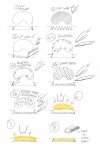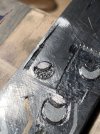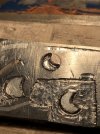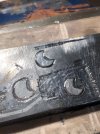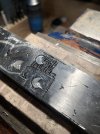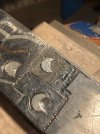Golabekrafts
Member
- Joined
- Oct 25, 2021
- Messages
- 34
Hello everyone!
Just thought I’d share this quick video I made during my practice work today. This is my second attempt at making a silver inlay moon in wrought iron. The practice is for a tsuba I have planned out. Still within my first 20 hours of engraving practice, I accidentally broke a tip for the first time applying too much pressure trying to break a chip out.
The video doesn’t show everything, but if anyone has any pointers that is always appreciated!
Just thought I’d share this quick video I made during my practice work today. This is my second attempt at making a silver inlay moon in wrought iron. The practice is for a tsuba I have planned out. Still within my first 20 hours of engraving practice, I accidentally broke a tip for the first time applying too much pressure trying to break a chip out.
The video doesn’t show everything, but if anyone has any pointers that is always appreciated!


